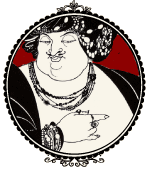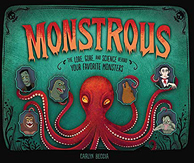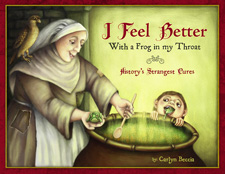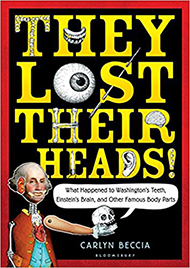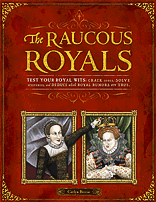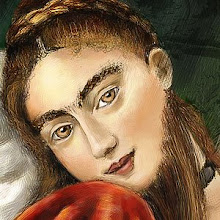In They Lost Their Heads,
I wrote about van Gogh’s ear cutting debacle and the events which unfolded
thereafter. Van Gogh was tormented by mental health issues and committed himself to
an asylum in early May 1889. Between then and his death the following year, he vacillated between
recovery and relapses of mental health. One of his most famous paintings, The Starry Night, was painted during this
time, along with his last painting, Eternity’s
Gate.
Eternity's Gate - van Gogh's last painting. Real cheery stuff. The old
man doesn’t have absinthe in his eye. He clearly is bummed out.
New research has been surfacing on van Gogh’s final days before a bullet shot to the abdomen
ended his life. One theory is that the tortured artist did not take his
life but was murdered by 16-year old René Secrétan. According to rumors at
the time, Secrétan was your typical surly teen who bullied Vincent for months. It's hard to believe Van Gogh would not push back against a bully. His irascible temper was infamous. When Gauguin pissed him off, van Gogh chucked bottles of absinthe at Gauguin's head. He quarreled many nights with his
brother Theo enough for him to remark, “…he makes life hard not only for others but also for himself.”[1] Given Van Gogh’s combative nature, he
doesn’t seem the type to let bullies pick on him. The narrative just doesn’t
fit together.
Still, the murder theory has been raising its dubious head
in art circles for some time now but really found its legs with the discovery
of a rusted Lefaucheux revolver in a field at Auvers near where van Gogh was believed
to have killed himself.
The pistol was found by a farmer in 1965 and according to Alain
Rohan, the gun was
buried in the ground for at least 50 years. Unfortunately,
there isn’t any forensic evidence that this was the gun used to kill van Gogh
nor does the gun indicate who pulled the trigger.
 |
| The revolver recently sold in auction for €162,500 mostly because it is believed to be the murder weapon. |
The van Gogh was murdered theory is an intriguing tale which
makes for some sensational click bate but I personally find it incredulous given
van Gogh’s mental health. His friends, family, and physicians paint a picture as turbulent as his haunting swirls of paint – van Gogh was very ill.
First off, there is the ear cutting incident….
 |
| There's been a lot of debate whether van Gogh cut his ear lobe off or his entire ear. Dr. Felix's drawings appear to indicate Van Gogh went for the whole enchilada. |
Dr. Felix Rey, the physician who attended van Gogh made these drawings
showing exactly how van Gogh’s ear was sliced off. (Due to how the ear was cut
off cleanly, I believe Gauguin may have done the deed with a fencing sword but
that is a story better left for the book…)
[2]
Even more telling than body mutilation, Dr. Rey also wrote
about his patient’s epileptic seizures and the depression that followed each
episode - an unfortunate symptom of epilepsy.
[3]
Aside from his doctors, who clearly thought van Gogh was
coming unhinged, the person who was most familiar with Vincent’s struggles was his
brother, Theo. Theo was his confidant, his art dealer, his most cherished
friend, and the person who kept Vincent tethered to the hope he would someday recover. Theo most certainly believed his brother had committed suicide. A few
days after Vincent’s death, he wrote to his mother:
Vincent said “I would
like to go like this,” and half an hour later he had his wish. Life weighed so
heavily upon him…”[4]
 |
| Vincent's brother Theo who acted as his art dealer and confidant. One could argue he was a crappy art dealer considering van Gogh only sold one painting during his lifetime but Theo had far more success selling the works of two other relatively unknown artists of the time - Claude Monet and Edgar Degas. |
In another letter written from his very close friend Emile
Bernard to Albert Aurier, he wrote about van Gogh’s final hours after he
staggered back from those golden wheat fields.
He finally died on
Monday evening, still smoking his pipe which he refused to let go of,
explaining that his suicide had been absolutely
deliberate and that he had done it in complete lucidity. A typical detail
that I was told about his wish to die was that when Dr. Gachet told him that he
still hoped to save his life, he said, “Then
I'll have to do it over again.” [5]
(Emphasis added)
 |
| Emile Bernard is second to the left. Van Gogh is third from the left. Gauguin is at the far right. Bernard and van Gogh's friendship became strained right before van Gogh's death due to differing artistic opinions. After van Gogh's death, Emile organized van Gogh's first solo exhibition in Paris and worked tirelessly to ensure his friend's legacy would not be forgotten. |
Van Gogh was so determined to end his life that he was going
to do it more than once if anyone stopped him. Logically, if someone is
murdered, they might want to stay on this earth and would not refuse medical
assistance. Van Gogh was determined to leave it.
We also have to remember the stain of disgrace suicide left
behind. Society and the church considered it such a mortal sin that van Gogh’s hearse
was not even allowed to be carried up the hill to the church cemetery. If his
friends and family believed he was murdered instead of suicide, that would have
surely offered some relief.
Another theory which is more plausible is that Secrétan shot
him accidentally, and van Gogh, already suffering from his share of demons,
decided not to place blame on his murderer. Maybe he thought he had done him a
favor? Interestingly, handgun expert Vincent Di Maio has claimed the angle of
the bullet entering van Gogh’s abdomen was too “awkward” to be suicide. I am
never one to discredit forensic evidence, but I do wonder how accurately the
bullet’s trajectory was recorded at the time.
Proponents of the murder theory point to the lack of suicide
note, especially coming from someone known for prolific letter writing. But
trying to follow van Gogh’s mental state in his letters is like trying to ride
the crest of a wave. Like most people suffering from mental illness, he went
through periods of ebullience followed by periods of manic depression.
 |
| Van Gogh painted these cypress trees when he was allowed to take walks outside of the asylum. Van Gogh said he enjoyed painting these majestic trees because they reflected his emotions. In classical mythology, the cypress tree symbolizes death, the underworld, and eternity. |
Was van Gogh murdered?
I love a good conspiracy
theory as much as the next person, but the truth is that without any clear forensic evidence, there isn’t any smoking gun that
indicates murder.
According to his brother Theo, Van Gogh’s final words on his
death bed were– “La tristesse durera toujours” [The sadness will last forever].”
These are chilling last words when not even death could
allow him to escape the clutches of hopelessness. Theo wrote, “I understood
what he wanted to say with those words.” Theo knew the anguish that chipped
away at his brother’s heart probably better than any modern biographer.
Theo's mental health deteriorated after his brother's death and he died a year later due to paralytic dementia - a disease of the brain.[6] Vincent's pain was his pain, and as brothers, they shared this crown of thorns.
-->
Sources and Footnotes:
[1] The Letters of
Vincent Van Gogh, 68.
[2] Ok here is a teaser.... Dr. Rey kept Van Gogh’s ear in a jar on his desk. The ear was later stolen
[3] It is still unknown if van Gogh suffered from epilepsy but he did have seizures. Naifeh and Smith (2011), 701 ff., 729, 749
[6] I, of course, can't get through a blog post without mentioning syphilis. Most likely, it was due to the tertiary stages of syphilis. Considering that van Gogh frequented brothels, it is highly unlikely that he did not have the disease also.
-->
-->

